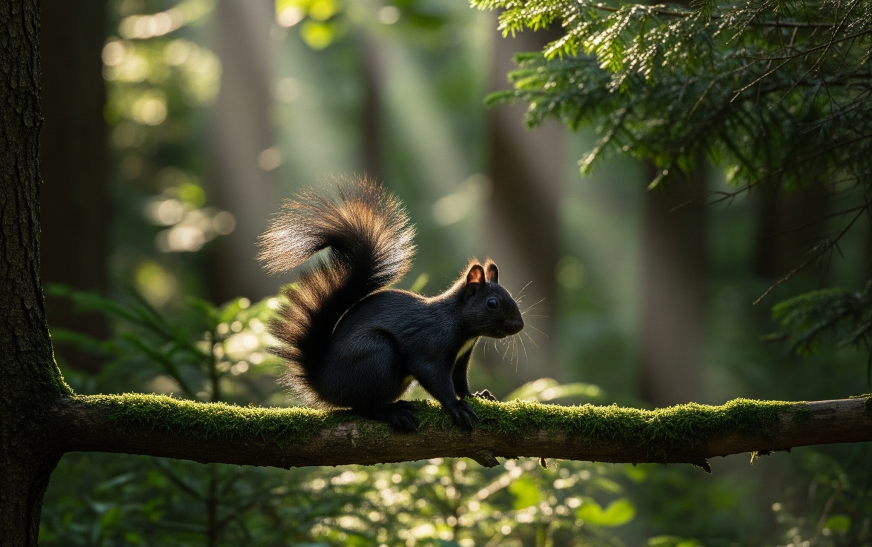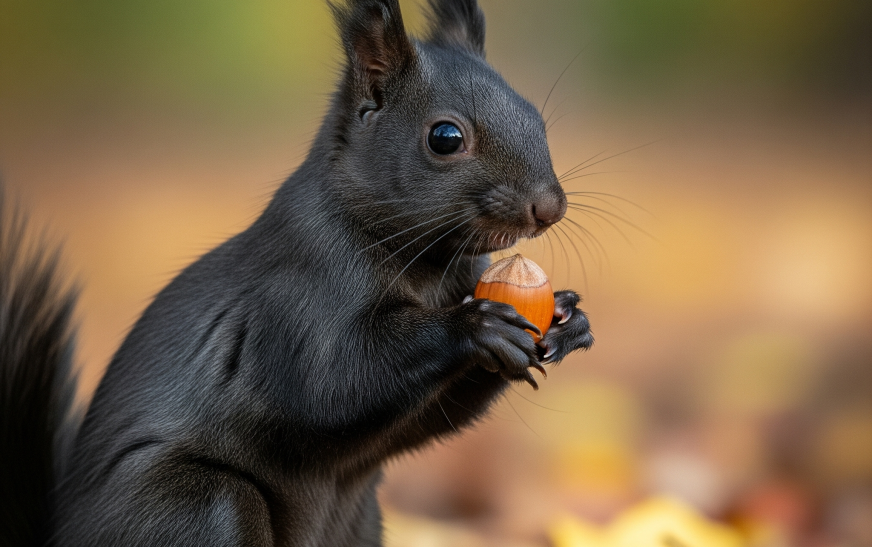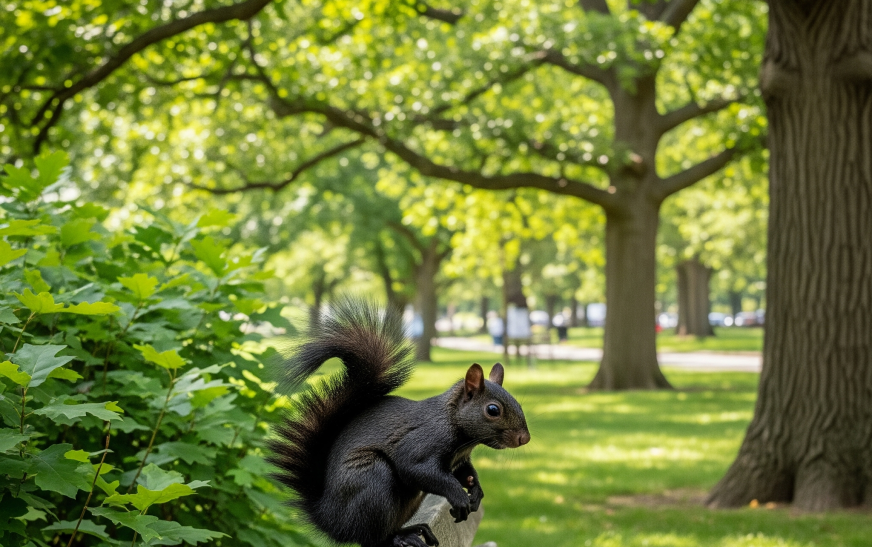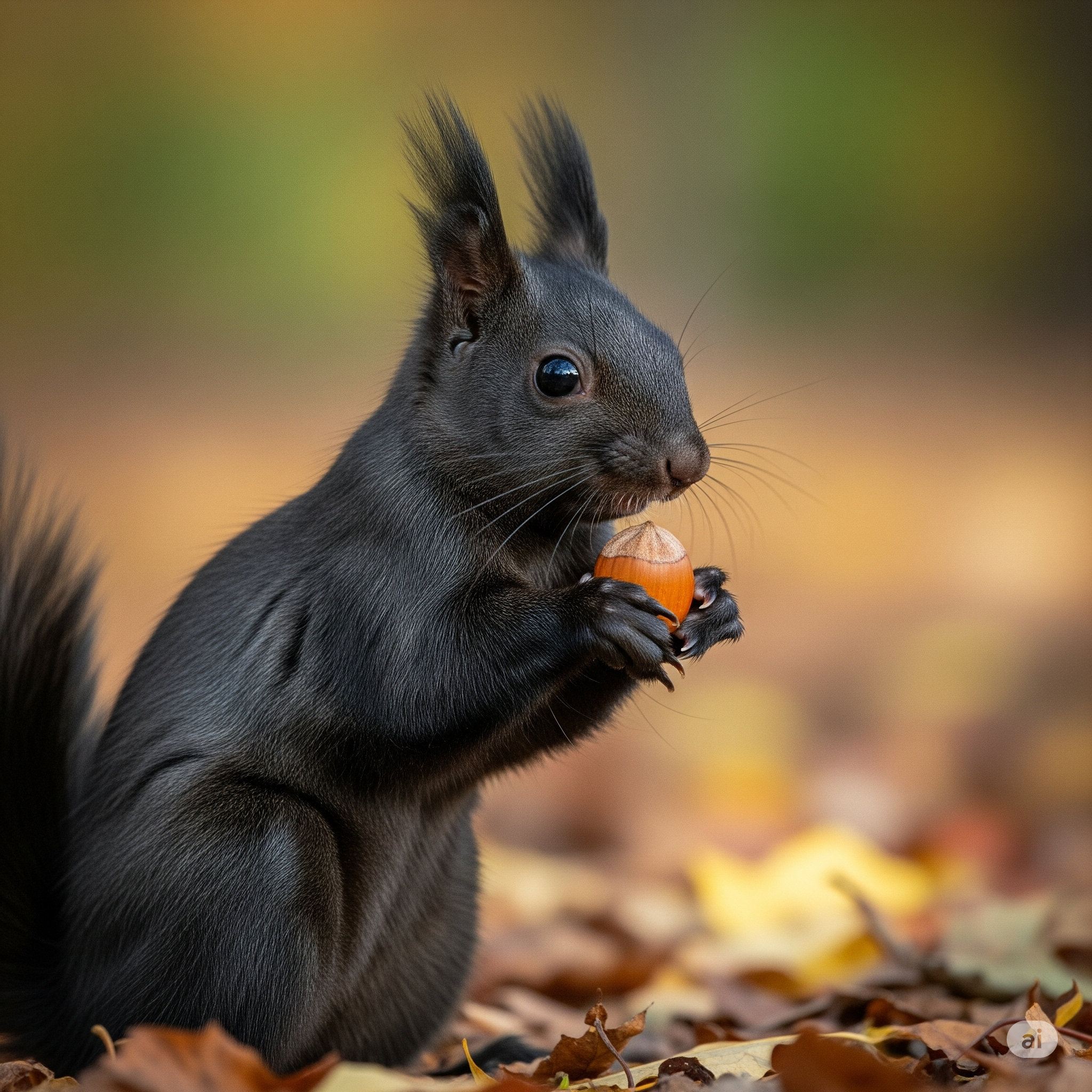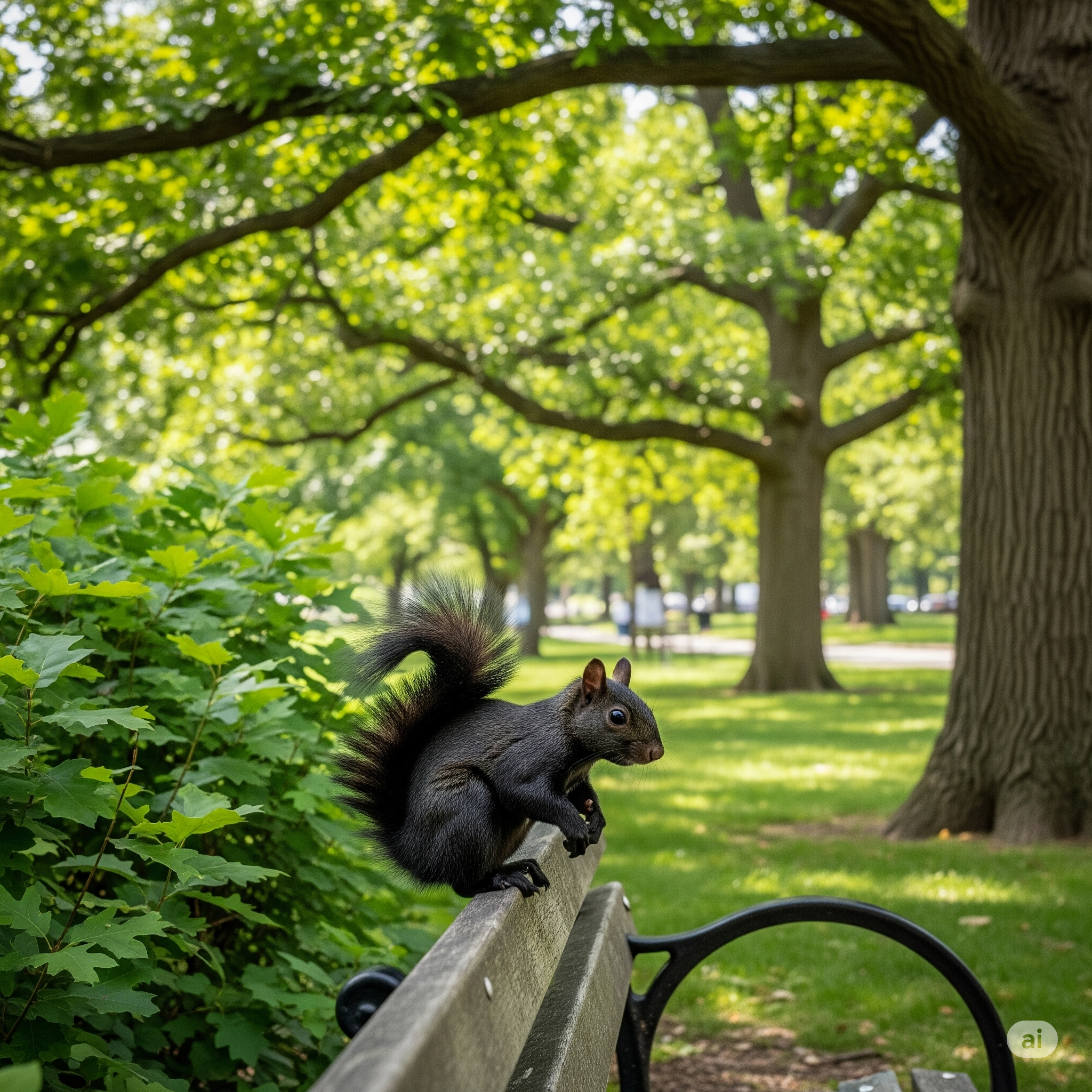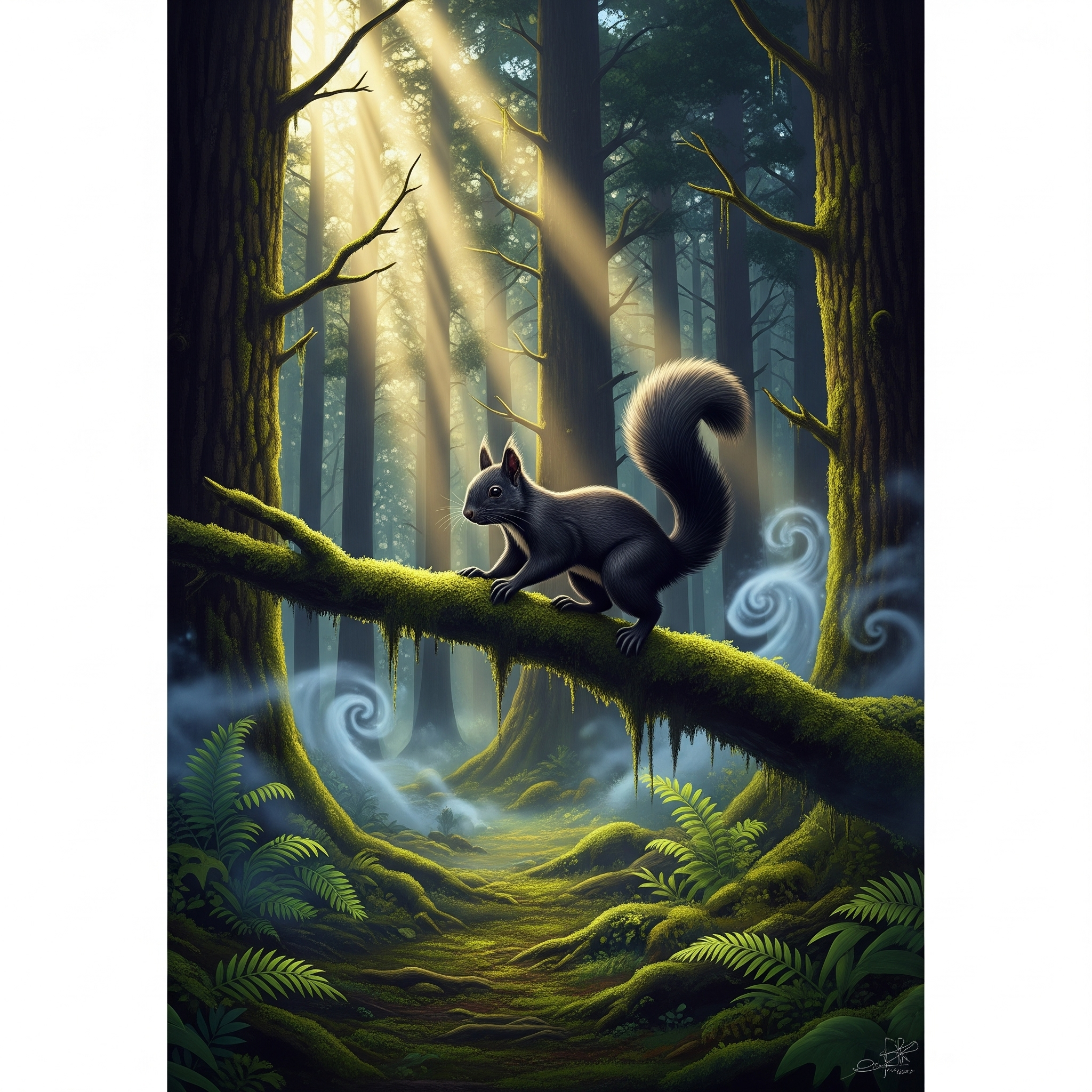Have you ever been walking in a park and stopped dead in your tracks at the sight of a sleek, jet-black squirrel darting up a tree? In a world dominated by the familiar grey squirrel, seeing a black one feels special, almost magical. It immediately sparks a question in your mind: “Did I just see something incredibly rare?”
The answer is both simpler and more fascinating than you might think.
So, how rare are black squirrels? While they are significantly less common than grey squirrels globally, their rarity is entirely dependent on your location. In some areas, seeing one is a once-in-a-lifetime event, while in others, like parts of the Northern US and Canada, they are a common, everyday sight.
They are not a separate species but a stunning example of genetics at work. This article will dive deep into the science behind their black fur, uncover their surprising origins, and settle the debate on their rarity once and for all.
What Makes a Squirrel Black? The Science Explained
To understand a black squirrel’s rarity, we first need to understand what makes it black. It’s not a different breed or species. In fact, a black squirrel is most often a melanistic variant of the Eastern Gray Squirrel (Sciurus carolinensis), the same species you see everywhere. Less commonly, they can also be a variant of the Fox Squirrel (Sciurus niger).
“Melanism” is the term for an increased amount of dark pigment, called melanin, in the skin and fur. It’s the opposite of albinism. In black squirrels, this isn’t just a random occurrence; it’s due to a specific genetic trait.
Research from scientists, including a notable study published in the journal BMC Evolutionary Biology, has revealed a fascinating genetic story. It turns out that the gene for black fur in Eastern Gray Squirrels actually originated from Fox Squirrels. Thousands of years ago, a male Fox Squirrel with the gene for black fur mated with a female Eastern Gray Squirrel. This interspecies breeding passed a mutated pigment gene into the grey squirrel gene pool.
This specific gene mutation causes their bodies to produce an excess of melanin, turning their fur a deep, uniform black. Think of it like hair color in humans—it’s a genetic difference in appearance, not a fundamental difference in who they are.
Where Did Black Squirrels Originally Come From?
This brings us to their origin story. If the gene came from Fox Squirrels, where were they all hiding?
Historically, black squirrels were believed to be far more common across North America before the arrival of European settlers. The continent was covered in vast, dense, old-growth forests. The dark, shaded environment of these ancient woods provided the perfect camouflage for a black-furred animal, helping it hide from predators like hawks and eagles. The grey-colored squirrels, by contrast, stood out more against the dark tree bark and shadows.
However, as these massive forests were cleared for agriculture and settlement, the environment changed. The more open, sunlit landscapes gave the advantage to grey squirrels, whose lighter color provided better camouflage in the new surroundings. The black squirrel population dwindled, becoming a rare sight in many of its former territories.
So, when you see a black squirrel today, you’re not just looking at a curiosity; you’re seeing a genetic echo from a time when North America’s forests were wilder and darker.
Are Black Squirrels Actually Rare? A Look at the Numbers
This is the core of the question. The answer is a classic case of “it depends on where you are.”
“Hotspots”: Where Black Squirrels Are Common
There are specific regions, often called “black squirrel hotspots,” where their population is thriving. In these places, they are not rare at all. Some of the most famous hotspots include:
- Kent, Ohio: Kent State University is famous for its black squirrel population. They were introduced to the campus in 1961 and have since become the university’s unofficial mascot. Here, they are more common than grey ones.
- Ontario and Quebec, Canada: Many cities like Toronto, Ottawa, and Montreal have robust and visible black squirrel populations. This is partly due to their survival advantage in cold climates.
- Washington D.C.: Black squirrels were introduced to the National Zoo in the early 1900s. They escaped, and now their descendants are a common sight throughout the city’s parks.
- Council Bluffs, Iowa: This city is another well-known hotspot with a thriving community of black squirrels.
The Comeback Story: Why Are They Thriving in the North?
The reason black squirrels do so well in these northern regions is linked to a significant survival advantage. Studies have shown that their black fur is more effective at absorbing solar radiation.
This gives them a thermal advantage. During cold winters, a black squirrel loses less body heat and can stay warmer than a grey squirrel. This means it needs to expend less energy and food to survive the harsh weather, leading to higher winter survival rates and better reproductive success. This small edge, multiplied over generations, has allowed their populations to boom in colder climates.
Where Black Squirrels Are a True Rarity
Conversely, in the Southern United States and many parts of the West Coast, black squirrels are exceptionally rare. The climate doesn’t offer them the same thermal advantage, and the grey morph remains dominant. If you see a black squirrel in Florida or Southern California, you have indeed witnessed something special.
Conclusion: A Story of Survival
So, to answer our initial question: Black squirrels are not a rare species, but a rare and beautiful color variation whose visibility is hyper-local. Their presence tells a story of genetics, history, and incredible adaptation. They are a living link to North America’s ancient forests and a testament to nature’s ability to thrive through a simple, powerful genetic advantage.
The next time you see one, you’ll know the full story. You’re not just looking at a squirrel with a different coat; you’re looking at a master of survival, perfectly adapted for the cold and carrying a genetic legacy thousands of years old.
Next, we’ll explore exactly where you can find these fascinating creatures. To discover their main habitats, read our detailed guide: Where to Find Black Squirrels: A Complete Map of Their Locations

